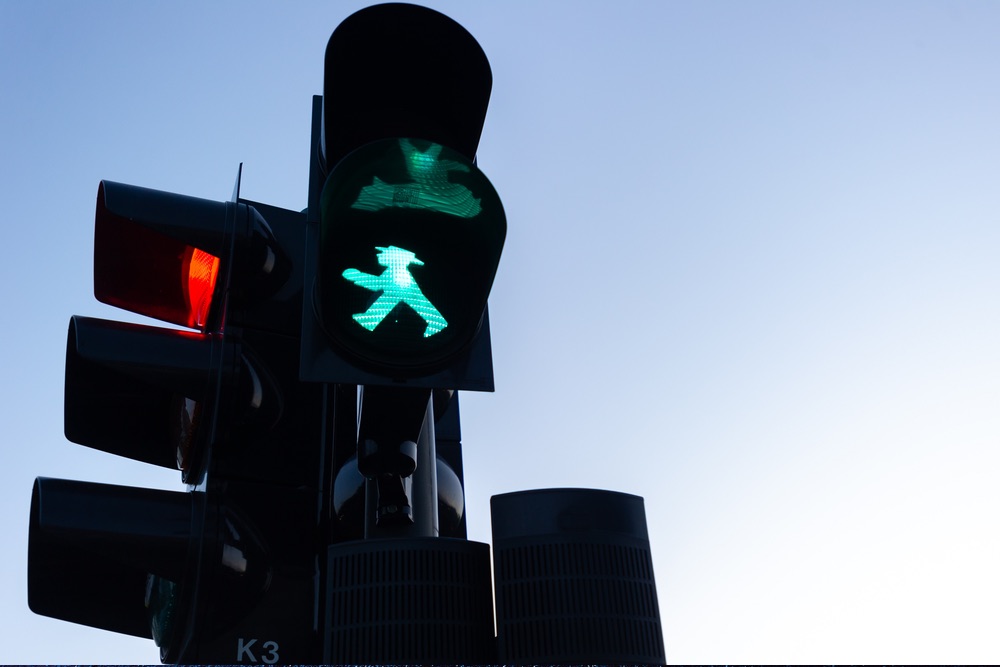
For a long time, the state health system in the GDR was considered exemplary, because every sick or injured person had the right to be treated free of charge, and the state managed to provide comprehensive care.
The contribution for the combined health and pension insurance was 20 % of the gross income and was deducted directly from the salary. There was a maximum rate of 600 marks, 1200 marks for members of the FZR ( Voluntary Supplementary Pension Insurance). Half of the pension contribution was paid by the company. Children and spouses were insured free of charge, non-working family members could take out voluntary pension insurance for 0.50 marks/month. Freelancers such as artists, tradespeople and pastors could take out health insurance with the GDR state insurance for 10 marks/month. They could also join the social insurance scheme, but then had to pay the employer’s contribution themselves.
A great advantage was that all medicines prescribed by the doctor were free of charge, but a disadvantage was that the import of modern medicines from non-socialist foreign countries into the GDR was officially prohibited until 1985.
For outpatient medical care, there were legal private practices in addition to the state outpatient clinics and polyclinics. In 1989, however, there were only 1 % private practices left.
Hospitals and special clinics were distributed according to population density. As a rule, the state authorities were the responsible bodies, but there were also some church institutions.
For decades, the country managed to keep up with western medicine. In some areas they were even better, e.g. infant mortality was lower than in West Germany for a long time.
But in the later years, GDR medicine fell behind. The domestic industry was not in a position to provide the equipment for modern apparatus medicine. The import ban on Western medicines condemned many a GDR citizen to an early death unnecessarily.
Even worse, in the supposedly classless GDR state, health care was by no means equal for all citizens. While, for example, in the government hospital, in the Berlin Charité or in the hospitals of the Wismut works (which operated uranium mining in Saxony and Thuringia), patients entitled to admission received first-class care, most hospitals since the mid-1970s had to make do with outdated technical equipment and all too often also with inadequate drug treatment options
At the end of the 1980s, for example, there was only one computer tomograph per 600,000 inhabitants in the GDR (Western Europe: 1 unit). per 100,000 inhabitants) and one ultrasound unit per 32,000 inhabitants (Western Europe: 1 unit per 2500 inhabitants).
The normal GDR dentist had to work with the outdated dry drills, the heat generated during drilling made dental treatment an ordeal.
The available dialysis machines were far from sufficient. Insulin or effective cardiovascular drugs could mostly not be prescribed for the mass of patients.
In the 1980s, GDR patients were even officially advised to get urgently needed medicines from relatives or church offices in West Germany. Quite a number of seriously ill GDR citizens had Western assets, e.g. from inheritances. But the hurdle race for the approval to buy western medicine was enormous. Almost all died before the possible approval.
One of the positive aspects of the socialist system was the wide range of preventive medical check-ups. This included regular compulsory examinations during pregnancy and regular screening in crèches, kindergartens and schools. Outpatient X-ray vehicles for screening in smaller towns and villages helped very successfully in the fight against tuberculosis.
Today’s medical centres are just a tired copy of the GDR polyclinics. Citizens could find just about any medical care under one roof, from ophthalmologists to dentists. The specialists had their laboratories under the same roof.
The declared aim was to “maintain the health of the working people”. But it was difficult to break the unhealthy habits of the citizens. High-fat food, smoked products and alcohol were the consumer goods that were always available to GDR citizens. Sugar was also available in large quantities. In contrast, the supply of fruit was insufficient. This explains the GDR citizens’ fascination with exotic fruit; tinned pineapple, for example, had a reputation in the East that the spoilt Westerner could hardly understand. Only occasionally did the GDR receive exotic fruit from “socialist brother countries”.
Furthermore, the general dissatisfaction of the GDR citizens led to an alarming increase in alcohol consumption: statistically, each of the 16.5 million inhabitants consumed 146 litres of beer and 15.5 litres of schnapps in 1989, four times the per capita consumption in 1960.
In the 1980s, life expectancy in the GDR was three years lower than the German average for women (75.7 years) and for men (69.7 years) (2.5 years).
The problems of health care were not reported in the GDR. The State Security Service, however, of course knew what was going on. In April 1989, it summarised the “causes of the supply situation in the health system”: “The material-technical and personnel supply was insufficient, the pharmaceutical industry was outdated. GDR products could hardly be used, we were partly completely dependent on the non-socialist economic area.“
In the period before the Wall was built, many doctors had gone to the West. Then, in the 1980s, a mass exodus of doctors led to a chronic shortage, especially of urgently needed specialists. Numerous Files from the Ministry of State Security show a clear shortage of doctors in the GDR in the 1980s. There was a shortage of doctors both in hospitals and in outpatient care. The individual districts and different specialties were affected to varying degrees. In 1987, the shortage of doctors at the University of Greifswald was described as a “problem that can hardly be solved”. More than a fifth of all hospital beds could not be occupied. Ideology played a fatal role, The GDR system never allowed enough young people to study and ideology prevented children of doctors from following in their parents’ footsteps.
Finished doctors had other problems. In many cities there were no flats for them. The general housing shortage in the GDR also affected them.
The Stasi was generally against travelling to the West for further training. Too often, doctors had simply not returned home. In the spring of 1989, the MfS reported: “Above all 30- to 45-year-old doctors with good professional qualifications, a quarter of them in management positions, would leave the GDR “illegally”.“
In addition, a disproportionately large number of doctors were involved in the citizens’ movement. The MfS was in the difficult position of not having to take action against the doctors because of the shortage of doctors. Worse, more and more GDR citizens realised that they were lagging behind the West. The multitude of hospital and doctor series on Western television were more effective than any state propaganda of the “class enemies”.
Only a few still believed in classless medicine. The “bigwigs” of the SED had access to the best care and Western medicines had always been procured for them. Thus the medical crisis accelerated the downfall of the GDR.



